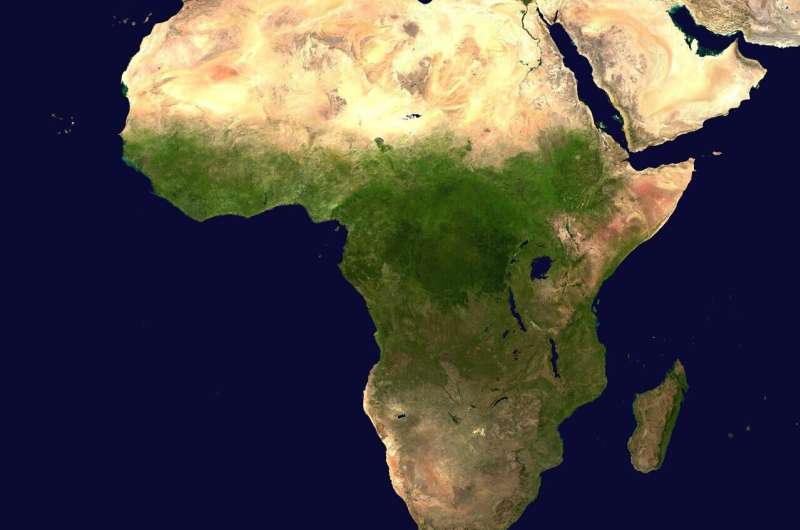Imagine a time millions of years ago when the world looked quite different than it does today. A recent study led by researchers at Brown University has unveiled surprising new insights about the ancient rainfall patterns of northern Africa during a crucial period in Earth’s climatic journey. Let’s dive into this heartwarming tale of discovery that helps us understand our past and what it could mean for our future.

Between 3.5 and 2.5 million years ago, during a significant shift in Earth’s climate, this region showed remarkable stability in its rainfall patterns. Traditionally, scientists believed that northern Africa underwent a drastic drying during this time, which might have played a vital role in our species’ evolution. However, the latest findings, published in Science Advances, challenge those long-held views and offer a fresh perspective on the environmental backdrop of our early ancestors.
The study, led by Bryce Mitsunaga, a Ph.D. student from Brown’s Department of Earth, Environmental, and Planetary Sciences, used innovative techniques to peel back the layers of history. By analyzing leaf waxes, which plants produce during their summer growth, the team could directly assess rainfall patterns from that era.
“These waxes act like climate time capsules, signaling the summer rainfall over the years,” Mitsunaga explained. The team discovered that regardless of the global cooling and glaciation events taking place, northern Africa’s precipitation levels remained relatively unchanged. This finding is a pivotal reassessment of a time when Earth was undergoing remarkable transformations.
Previously, evidence for drying in northern Africa stemmed from dust found in ocean sediment cores, which indicated increased dust levels during the Pliocene-Pleistocene transition. Scientists had interpreted this as a signal that the Sahara Desert was expanding due to diminished summer monsoons.
In this recent study, however, the researchers meticulously analyzed the same sediment cores for signs of plant life and water ingestion by those plants. The results painted a very different picture—one of consistency rather than a drastic shift. They identified that the waxes from plants contained isotopic signatures of water that pointed towards stable rainfall, suggesting those ancient lands were largely unaffected by the climatic changes impacting the broader planet.
With such a wealth of insights, it turns out the dust accumulation in earlier studies might be attributed to factors unrelated to rainfall, perhaps shifts in wind patterns or intensity. This understanding opens the door to new conversations about how we perceive the climate history of northern Africa.
The implications are significant, not only for our understanding of the past but also for making educated predictions about the future climate patterns in already water-stressed regions. With carbon dioxide levels at that ancient boundary believed to be similar to today’s—a reminder that climate change is indeed a cyclical issue—this study could illuminate our path forward.
“It’s crucial to understand how historical climate shifts influenced rainfall patterns,” Mitsunaga noted. “This knowledge could be vital as we look to the future, especially in areas that face water scarcity.”
Jim Russell, a professor at Brown University and senior author of the study, stated that these findings provoke new questions about the climate history of northern Africa, especially in relation to the evolution of early hominids. The previous belief linking increased dryness to adaptations like bipedalism now demands a fresh approach, pushing researchers to explore new timeframes and theories about our ancestral lineage.
This newly uncovered chapter in the Earth’s story not only enriches our understanding of ancient climatic conditions but also serves as a reminder of how interconnected our narratives on climate, evolution, and survival truly are. The researchers invite all of us to continue exploring this intricate tale, as it holds essential lessons for our planet’s future.
More information:
Bryce Mitsunaga, Fundamentally unchanged northwestern African rainfall regimes across the Plio-Pleistocene transition, Science Advances (2025). DOI: 10.1126/sciadv.ads3149. www.science.org/doi/10.1126/sciadv.ads3149
If you would like to see similar science posts like this, click here & share this article with your friends!

